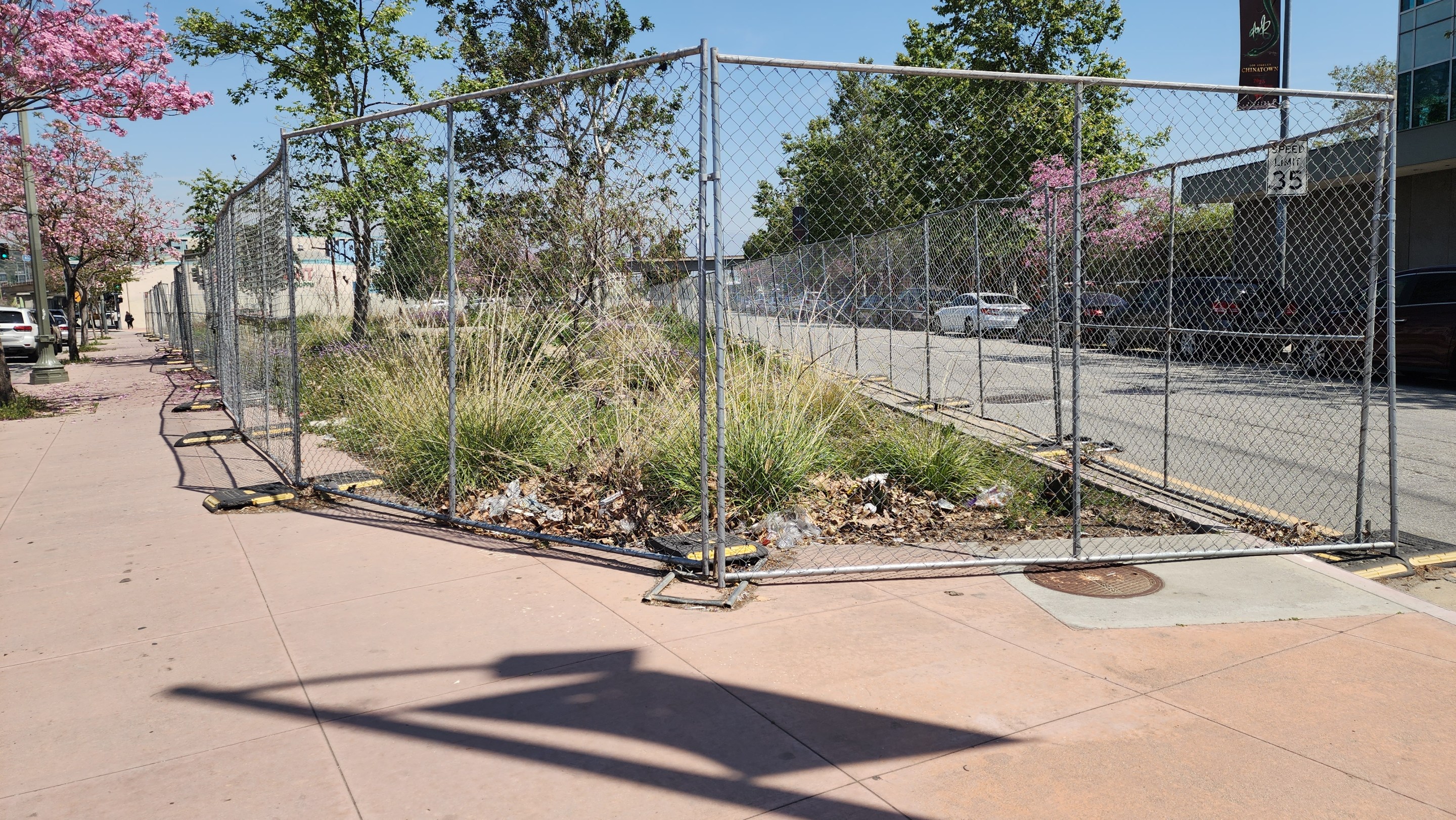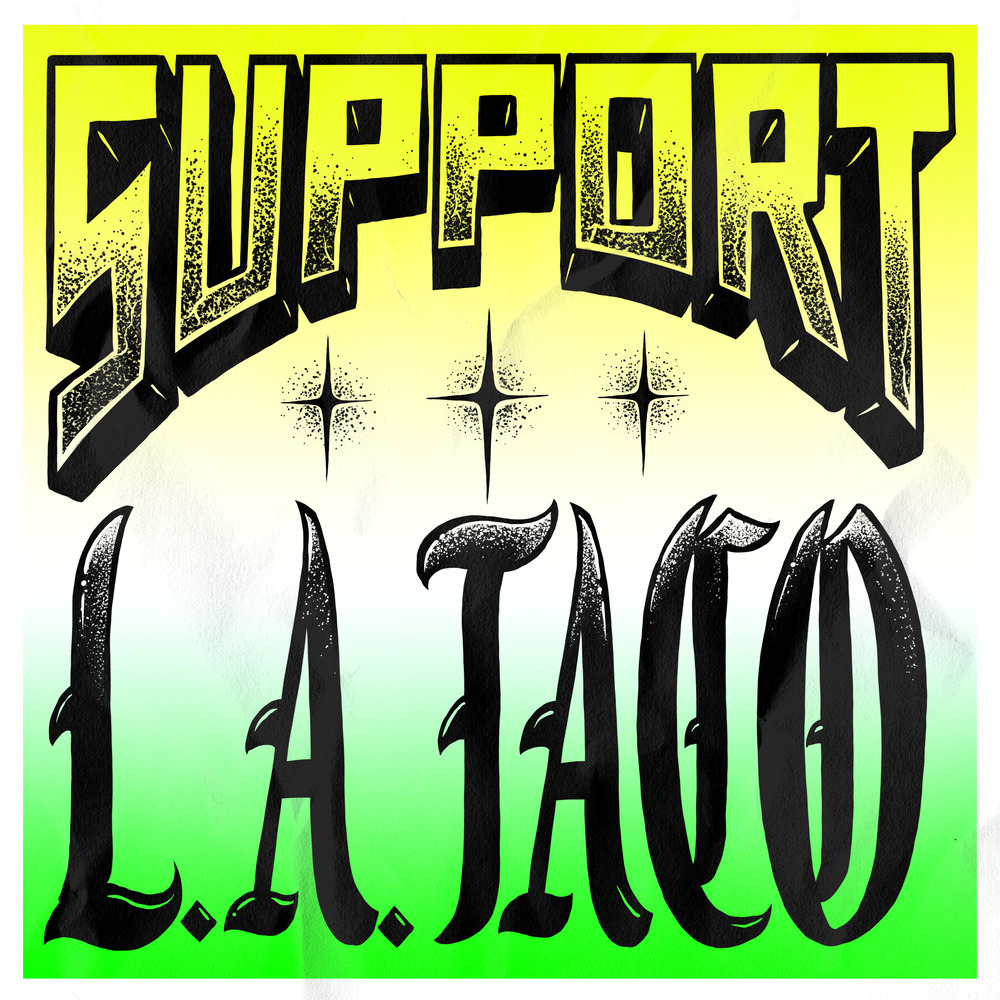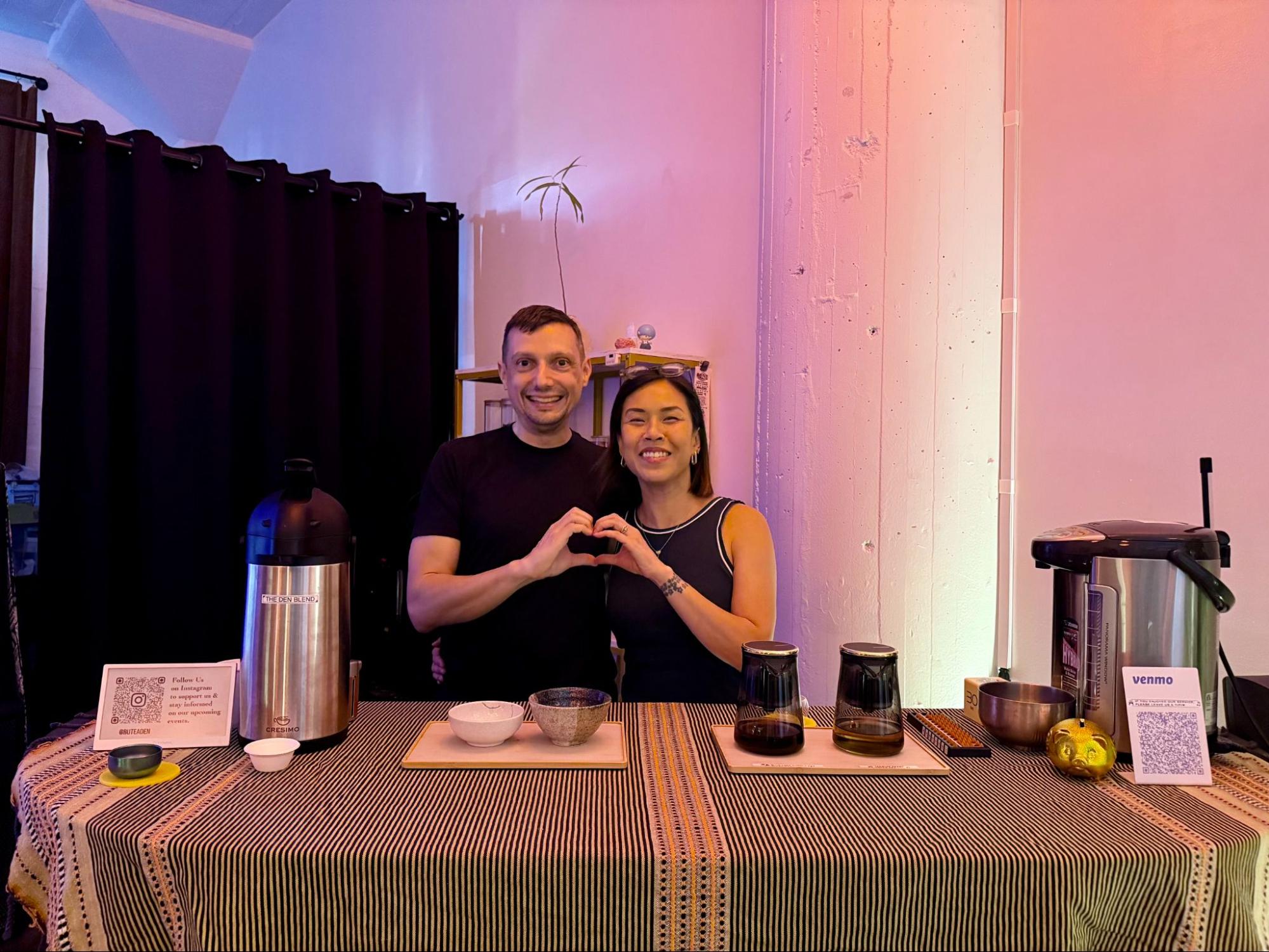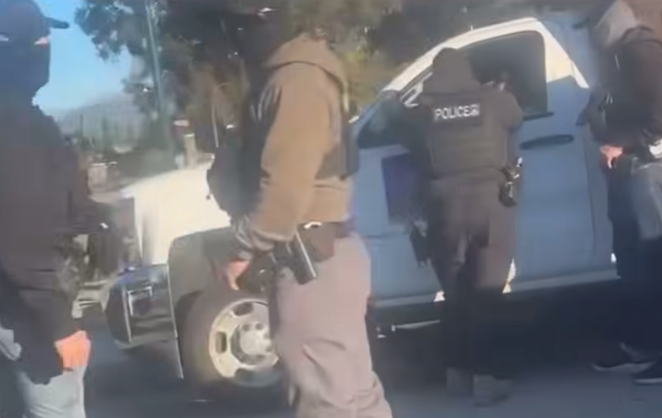More than a year ago, the city of Los Angeles cleared a large homeless encampment for a “beautification project” at Alameda Triangle, a triangular-shaped median directly across from Philippe The Original.
A fence was quickly erected, native plants, including white sage, yarrow, and deer grass, were planted in the ground, and the mostly bare median was transformed into a much-needed green space in a neighborhood that hardly has any.
A banner posted on the fence during construction said that the area would reopen to the public by summer 2024.
But the summer came and went without the fence coming down.
By the fall of last year, L.A. TACO began noticing the park filling up with trash, so we contacted the local council office.
In November, Rhondaya Fishburne, a spokesperson for Councilmember Eunisses Hernadez, told L.A. TACO, “The Bureau of Street Services (BSS) is leading the beautification project in Alameda Triangle Park and has contracted out landscaping services to tend to the native plants at the location.”
By then, the median had already been transformed into a lush mini-park with gravel walkways and dozens of shrubs and trees.
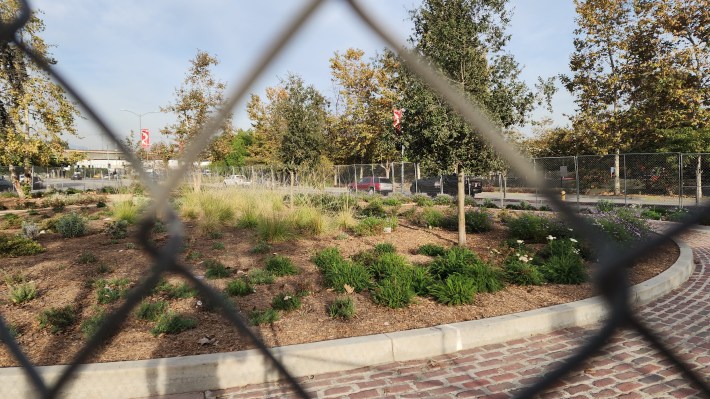
“BSS is extending the contractor’s maintenance period to undergo additional plant replacement, and the fence will remain through the end of the maintenance period,” Fishburne continued. “The projected timeline for the completion of this project is pending, and we will provide additional information as it becomes available.”
Today, more than 12 months after the area was cleared of unhoused people, Alameda Triangle remains fenced off. And it doesn’t appear that the area has been maintained for months.
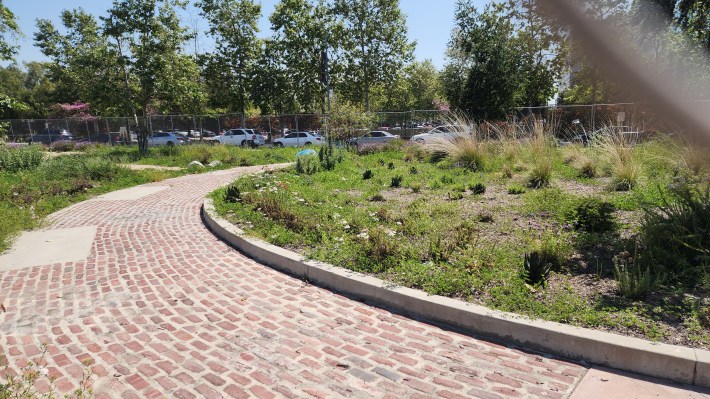
Since the fall, the median has become increasingly littered with trash, including plastic bags, discarded cigarette packs and blunt wraps, an umbrella, to-go food containers, empty bags of Doritos and Lay's potato chips, and other garbage. At the same time, untreated weeds sprout out of the garden beds and walkways.
In response to questions, Dan Halden, a senior advisor for Street Services, told L.A. TACO in a written statement that “The Alameda triangle is currently being beautified and improved through the State of California’s Clean California Median Greening Project,” an initiative that provided nearly $5 million to the city to enhance six median locations in historically underserved communities.
“The goals of this project are to enhance water conservation, improve air quality, promote biodiversity, and mitigate the urban heat island effect through multiple improvements, including the addition of native landscaping, water-efficient irrigation systems, and increased shade,” Halden continued.
Halden said the fence around Alameda Triangle was installed “to create a safe area for construction and allow for the landscaping to become established.” Halden confirmed that it’s expected to be removed by mid-summer 2025, about a year after the median was originally scheduled to reopen.
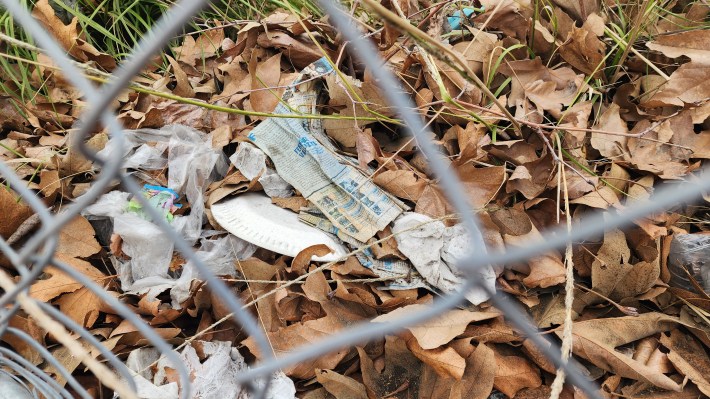
Halden admitted a “temporary lapse in maintenance” at Alameda Triangle last fall “due to the end of contract terms.”
“Once the landscaping at the Alameda triangle was installed in summer 2024, there was an initial 90-day maintenance period (by the installing contractor) that ended in fall 2024,” Halden explained in an email. “There was a temporary lapse in maintenance due to the end of contract terms, but a new contract was recently approved by the Board of Public Works, and the contractor is back on board.”
“Currently, the contractor is working to address the maintenance of this and other locations,” Halden wrote on April 9.
That same day, several bags of trash were removed from the park and weeds were pulled out of one of the garden beds and left in a pile on the ground. L.A. TACO also observed two Streets Services trucks parked next to Alameda Triangle with workers inside of the vehicles.
All expenses associated with “construction materials, native landscaping, and fencing” at Alameda Triangle are covered under the state grant, according to Halden. The Street Services senior advisor could not confirm the cost of the project.
“Per the terms of the Clean California grant, a final accounting of each project site funded by the program, including the Alameda triangle, will be conducted at the closeout of the project in late 2025,” Halden explained.
The Clean California Median Greening Project is part of the larger $1.1 billion Clean California (Clean CA) initiative, which “takes direct aim at the continuous trash accumulation that has overwhelmed the California Department of Transportation (Caltrans) and its partners.”
According to a copy of guidelines outlining eligibility requirements for the program, funds allocated to cities through the initiative can go towards, “enhanced paving, pavement alternatives, shade structures, irrigation systems, architectural fencing,” in addition to other improvements.
The funds, however, can not be used to acquire public rights-of-way or land, purely plan projects, provide stipends or gift cards, or “displacing people experiencing homelessness.”

In the case of Alameda Triangle, unhoused people were cleared from the median through an “Inside Safe” operation—a citywide initiative that moves people living on the streets into interim housing and occasionally permanent supportive housing—before the “beautification project” started.
A spokesperson for L.A. Mayor Karen Bass did not confirm how many people living at Alameda Triangle were moved into interim shelter or housing after the operation.
Activists and former residents of Alameda Triangle say they were pushed to the Chinatown median across from Philippe The Original after former Councilmember Kevin de Leon forced them out of his district and into Council District 1 by establishing a “no camping zone” around Cesar Chavez Avenue near El Pueblo de Los Angeles, where they were living.
Harvey is one of the people who moved from Cesar Chavez Avenue to Alameda Triangle before the median was cleared.
“I knew I had to leave because they wanted to fix the place,” Harvey told L.A. TACO over the phone while he waited for a bus. (Due to privacy concerns, L.A. TACO generally only identifies unhoused people by first name.)
Harvey says he was presented with a choice.
“I could move down the street or go in [into a motel],” he said.
Ultimately, Harvey chose a motel room in Highland Park.
“It’s like hell,” Harvey says, describing life at the motel that he’s lived at for over a year now while waiting for housing. “I’m not getting anywhere,” he said.
Harvey blames “bureaucracy” for keeping him from moving into long-term housing. He’s been eyeing a new affordable housing complex in East Hollywood, but he hasn’t moved in yet because the service provider he’s working with “keeps asking me to repeat the same fucking information.”
“I can’t even make a joke out of this shit,” he said.
